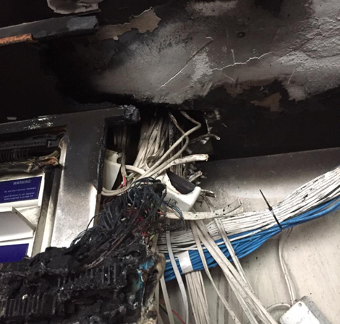
The Insured is a manufacturer of profile cut metal plate, wear plate and screening media. They service a range of industries including mining, oil and gas, transport, earth moving, construction and marine.
The business is run from a purpose built facility in Perth, Western Australia.
In early 2019, one of the Insured’s laser cutting machines caught fire, resulting in significant damage to the equipment. Fortunately, the Insured had two other similar laser cutters which were unaffected by the fire and production could at least continue.
Unfortunately, the damage occurred to the laser cutter that was the newest and the fastest of the three and the Insured had genuine concerns around how the business would continue to meet customer orders during the expected 12 week repair period.
In Perth in 2019, there are very few manufacturing businesses experiencing growth in revenue and profitability. When preparing the client’s business interruption claim, a review of their financial records, including their budgeted results for the forthcoming year revealed an expected growth in excess of 20%.
Naturally, any Insurer might, with good reason, question whether the Insured was capable of achieving such a result.
A further complication was that the Insured had suffered a similar loss 2 years prior and in the calculation of that claim, no significant growth trend had been allowed. Naturally, any claim now presented to the same Insurer, 2 years later, with a significantly higher trend would have been looked at very sceptically had there been no adequate support for the growth anticipated.
The claim was a partial loss. This complicated matters further because, if no growth was allowed in the claim calculation, the results achieved post fire would still be in excess of that achieved in the corresponding period of the prior year.
In anticipation of the Insurer’s queries regarding trend and expected growth in the business, we obtained very specific information from the Insured to support the reasons for the growth of the business in the past 2 years since the previous claim as well as information to support the ongoing growth for the forthcoming year.
The information presented set out specific capital improvements in the business allowing the Insured to not only take on more work but allowed them to enter new markets and clients that previously were not capable of being served. The introduction of a new management system was also a significant catalyst in allowing the Insured to become more productive not only with their labour force but reducing wastage making them more profitable.
It was imperative that these factors were presented clearly, with appropriate support, to provide the Insurer with the additional assurance that they required to be able to consider the claimed amount.
In addition, an analysis was also undertaken to demonstrate the Insured’s ability to achieve their budgeted revenue. That included an analysis of the Insured’s actual to budget results for the three years preceding the fire, all of which demonstrated that the Insured exceeded budget every year. This information coupled with the support provided around how the Insured was going to increase revenue, was the key to the success or otherwise of the claim amount.
The total claim was circa $300,000 for a business that has an annual gross profit of $13,000,000. The claim was therefore “relatively” small however, for any business in 2019, $300,000 from their bottom line can be the difference between a year that is profitable and a year that is not.
Without adequately addressing the growth trend of the business, the Insurer would have formed the view that the Insured was able to pick up lost orders on the remaining equipment however that was not the case.
Armed with a well-supported calculation, the loss adjuster was able to make very specific enquiries to satisfy themselves of the amount being pursued and the reasonableness of the loss suffered. Those directed queries were adequately addressed by our office and this resulted in quantum of the claim being agreed fairly promptly and the claim finalised.
A good result was achieved for the Insured which would unlikely have been achieved without the potential pitfalls first being identified and addressed upfront.


